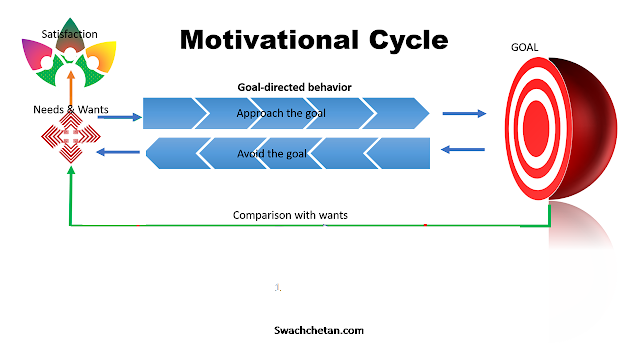E = MC2 in Psychology
We all have feelings for every person, animal, object, and event around us. We express these feelings every day. Do we know why?
Probably by following the
E = MC2 in Psychology, we might derive benefits from this approach!
We are not talking about
E = Energy. We are concerned here about something that is explained in the
field of psychology. Here E refers to Emotion, M indicates Motivation and
finally, C signifies Cognition. The cognition has to be doubled up along with motives
for it to be effective in the faculty of emotion.
Let us consider each of
them in detail.
EMOTION
Your personality is
largely reflected through your emotions. The two aspects of emotion –
Experience and Expression – have been dealt with elsewhere.
Emotions have become
part of parcel of our lives and some people feel that emotions are quite
important for our survival. These are the same people who advocate for everyone
to be stress-free. I have already explained, “How emotions act as a mirror to our level of stress”.
Some people believe that
positive emotions will eliminate stress in an individual. In reality,
irrespective of whether the emotions are positive or negative any emotion is
indicative of the level of stress. In other words, the lesser the stress, the lesser
the emotions, and the greater the stress, the greater the emotional
involvement.
As pointed out elsewhere, we must have negative emotions whenever we see a threat and
positive emotions whenever we feel safe. This is to protect our survival in the
environment.
However, this is not so
simple anymore. Even neutral stimulus becomes threatening to us and sometimes
even harmful substances become safer to us.
Consider the following
examples.
Neutral stimuli are
threatening
Case 1:
This is from a real
story. A homeless man sleeps regularly in a corner at the bus stop. One day he
comes there and finds another homeless person sleeping in his spot. He gets
angry and an argument ensues. Finally, it ends up with the man killing the
person.
Case 2:
Two friends walk into a
shopping mall. In the clothes section, one of them sees a shirt that he likes
very much. He shows it to his friend, and the friend says the color is lousy.
He doesn’t say anything at that time. Somehow he is attracted by the shirt and
buys the same shirt later by coming alone to the shopping mall. A few days
later, he is wearing the same shirt and the friend sees it. The friend says the
color is lousy when they are with a group of colleagues. He gets so angry that
the two friends exchange blows.
In both these cases,
anger is not the problem. Any amount of training in anger management does not help them. When we attach so much significance to a
neutral stimulus, losing it will make us feel threatened.
 |
| Threat and Safety |
Harmful substances are safer
Case 3:
People who are addicted
to smoking, alcohol, drugs, the internet,
etc. feel safe with the substances even though they know that these are
dangerous to their survival.
Case 4:
Mountain climbers, race
drivers, adventure seekers, and others find immense satisfaction when they
encounter danger where the option is injury or death.
In all these above
instances, emotions may be produced involuntarily or by conditioning as is
commonly believed. However, it is not so simple.
Emotions are a product
of motivation and cognition squared.
Let us consider these
factors in detail.
MOTIVATION
We always believe that
we make informed choices. However, the information we carry is not our own and
is influenced by several things.
Let us say, for
instance, you are very hungry. This suggests that you eat whatever food is
available around you. However, things are not so simple and direct. Many
questions need to be answered.
· Is the food cooked or not?
· Does it smell good?
· Is it tasty?
· Is it spicy?
· If it is just available, then is it leftover food or something that is thrown away?
· If it is thrown away, then why did they throw it?
· Is the food fresh or stale?
· If it is a portion of leftover food, then who left it?
· Have they eaten some part of it or not?
· If somebody is serving, is it for free or for a price?
· If it is free, then why are they giving it for free?
· If it is for a price, then do you have the money with you?
· Are they overcharging for the food?
· Will the food be sufficient for you?
· Are they serving the food with clean utensils?
· If they have cleaned it, then what kind of water would they have used?
· Are others eating similar food, or is someone planning to poison you?
These and so many other
questions haunt you before you consume the food. People, who say, “we have our
own free will to choose”, are living in a fool’s paradise. Our volition is
determined by so many psychological and social motives that the questions don’t
end even after we consume the food.
We do not ask the same
kind of questions when it comes to our addictions. Suppose someone addicted to
alcohol is served a drink in whatever form, he will accept it without
questions!
Thus, though your
emotions are reactions to the threat or satisfaction, what decides whether
something is a threat or satisfaction are the motives behind it.
Then, what exactly is
this motivation?
The motivation cycle has
been explained in detail in “Types of Distress and how to overcome them?”
To summarize,
It all starts with a need or a want, the source of which could be
physiological, psychological, or social.
Once the need is aroused certain expectations are set that could
be external or internal.
Then the goal is chosen which could be involuntary, habitual, or
voluntary.
This results in a stirred-up state in the individual that prompts a
goal-directed behavior.
The goal-directed behavior could be to approach or avoid the goal.
Satisfaction or the lack of it ensues after a comparison between expectations
and goal fulfillment.
These comparisons could be either self-generated or borrowed.
These are depicted in
the diagram below and these concepts are explained in detail in the article “Can we live without goals?”
 |
| Motivation Cycle |
So, several factors are
responsible for a motive to operate. And depending upon whether the goal-directive
behavior is an approach or avoidance, the corresponding positive or negative
emotions are aroused.
However, the motivation
itself is not enough to manifest a full-blown emotion. There is a need for
cognition, which we shall discuss in the next section.
COGNITION SQUARED
Emotion does not happen without
cognition. Motivation gives impetus to cognition and together they are
responsible for the consequent emotion.
The use of higher mental processes
and the involvement of the cerebral cortex are necessitated in cognition. Cognition
involves not only perception but also memory and concentration, and thought
processes like decision-making, problem-solving, etc.
Concerning motivation, it is the
cognitive processes that determine whether there is a threat or safety to one’s
survival. In addition, cognition also takes into consideration the environment,
context, people’s behavior, etc.
 |
| Examples of Cognition |
Let us clarify this with examples.
Example 1:
1. All the questions listed above under
motivation are indicative of cognition operating on the individual. You do not
eat something as soon as you perceive (see) it, to satisfy your hunger. You ask
a lot of questions until you find a satisfactory answer. Then there is the
question of likes and dislikes, preferences, choices, alternatives, etc.
influencing the individual’s decision.
Example 2:
2. Let us say you want to buy a dress. If you
find the dress you like, then it is understood that you will buy it for the
price mentioned. However, you assess the situation and find out who is selling
the dress. If a street vendor is selling it, then you would like to bargain,
even if the dress is cheaper. On the other hand, if the seller is in a
sophisticated shopping mall, then you will buy the same dress for the price
mentioned there, even though the dress is costlier. This is how our reaction to
stimuli changes as the situation changes.
Example 3:
3. A man is aggressive towards his wife
and children whereas he is docile at the workplace.
Example 4:
4. Suppose you see a tiger in front of
you in a forest! The normal reaction is absolute fear and you may freeze on the
spot. On the other hand, let us say you see the same tiger in a zoo, your reaction
will be merriment and you would like to spend a little more time looking at it!
Thus, the mere perception of a tiger does not produce fear, as is commonly
believed. It depends on the context and the surroundings.
Hence, emotions do not operate on
their own. For a given emotion to occur there has to be an underlying motive
and the concurrent cognition of oneself and the situation around.
Thus,
E = mc2 in Psychology
Emotion = motivation x
cognition2
The emotion is equal
to motivation times cognition squared
Understanding anxiety disorders, depression,
and other emotional disorders become less complicated if we adapt this model
to psychology.
We can even adapt a strategy to prevent depression by changing
the individual’s thoughts, decisions, and solutions.













Please do not include any spam links in the comment box.